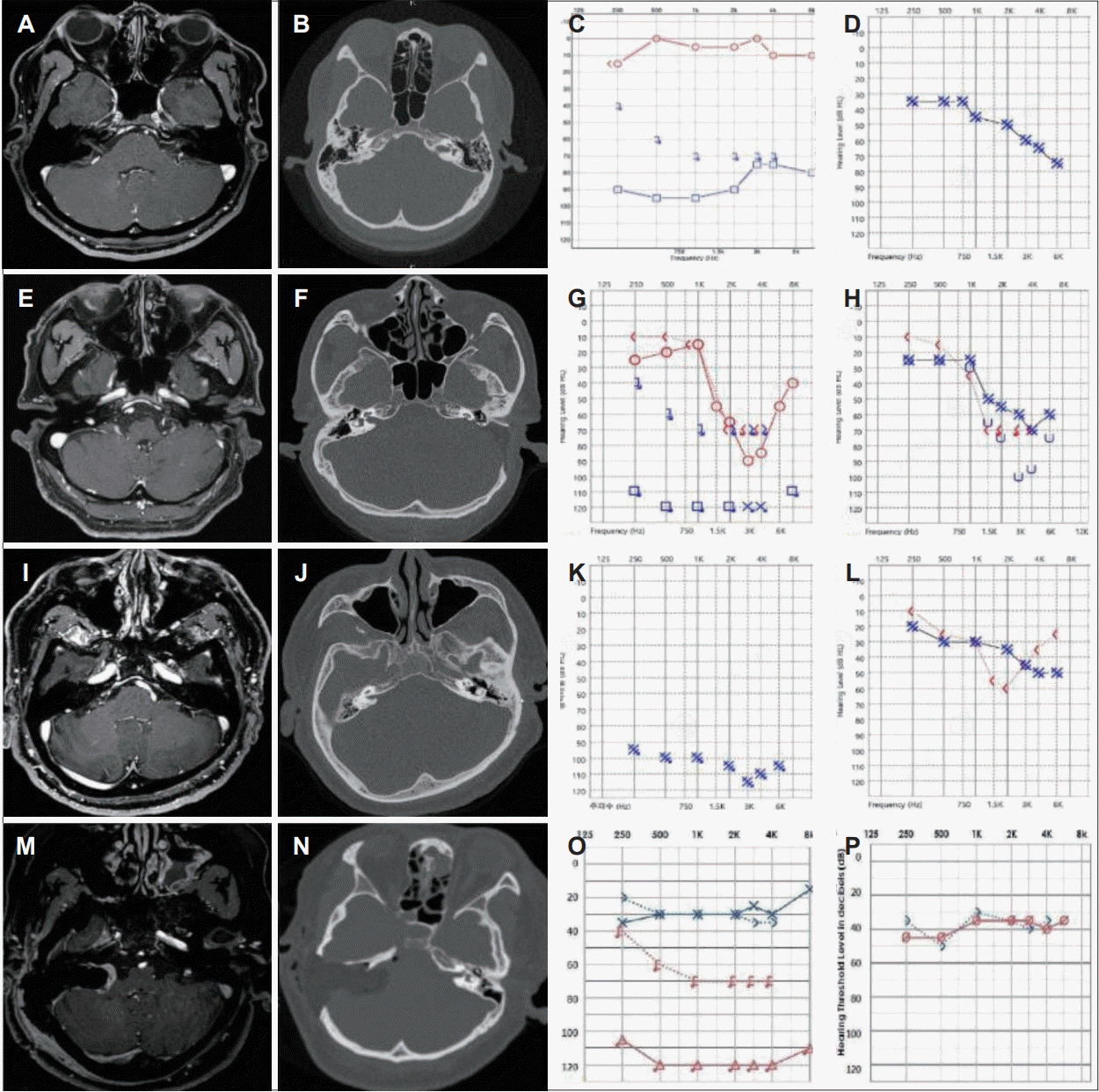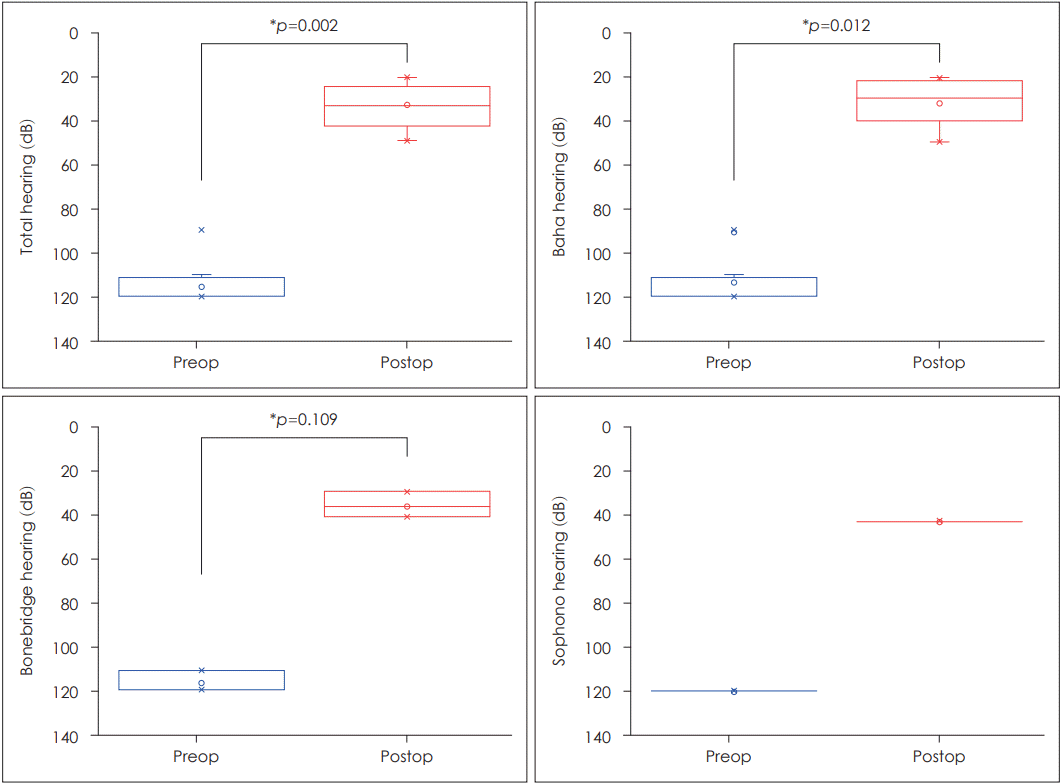Abstract
Background and Objectives
Subjects and Method
Results
ACKNOWLEDGMENTS
REFERENCES
Fig. 1.

Fig. 2.

Fig. 3.

Fig. 4.

Table 1.
Used six-frequency average. BCI, bone conduction implant; BC, bone conduction; WRS, word reception score; MCL, Most Comfortable Level; TLA, translabyrinthine approach; RSA, retrosigmoid approach; MCFA, middle-cranial fossa approach; mEETTA, modified exclusive endoscopic transcanal transpromontory approach; Baha, Baha Attract; BB, Bonebridge; SPH, Sophono
Table 2.
Each column showed difference of SNR after aided in each devices. Unaided-aided gap means SNR change before and after use of BCIs. In quiet condition, average all BCIs’ hearing level (unaided-aided gap) was -2.1 dB. In noisy condition, each SNR improved frontal (-0.6), right-side (-1.0), left-side (-2.9), all directions (-1.1) overall. BCI, bone conduction implant; SNR, signal/noise ratio
Table 3.
| Device | EC gap avg | RV gap avg | BN gap avg | AV gap avg |
|---|---|---|---|---|
| Baha Attract | 30.1±16.4 | 31.4±8.5 | 36.0±7.5 | 6.0±9.6 |
| Bonebridge | 19.0±3.0 | 17.5±3.5 | 21.5±8.5 | 0 |
| Sophono | 16.0 | 14.0 | 13.0 | 0 |
10 of 12 patients conducted APHAB score (Baha attract 7, Bonebridge 2, Sophono 1). Each 4 category score was calculated by gap between prefit score and postfit score. The gap average score is higher, patients expressed more satisfaction. APHAB, abbreviated profile of hearing aid benefit; EC, ease of communication; RV, reverberation; BN, background noise; AV, aversiveness




 PDF
PDF Citation
Citation Print
Print



 XML Download
XML Download